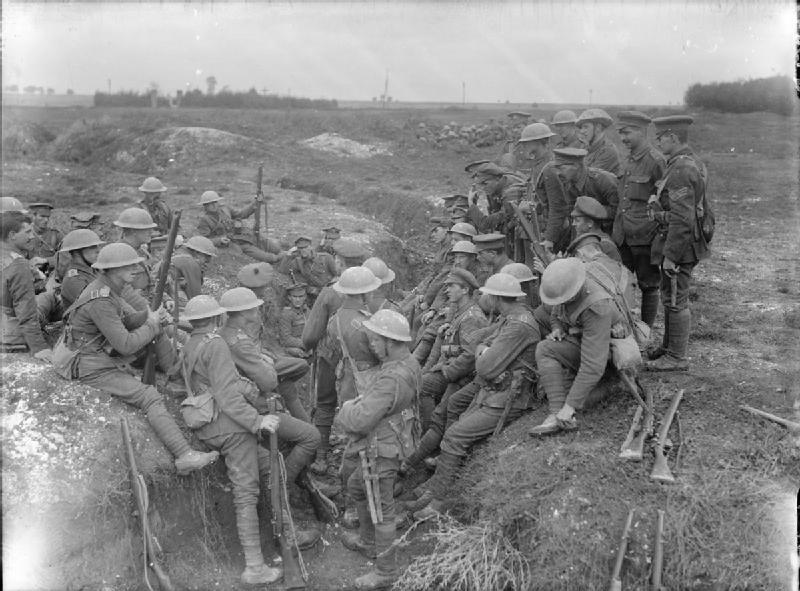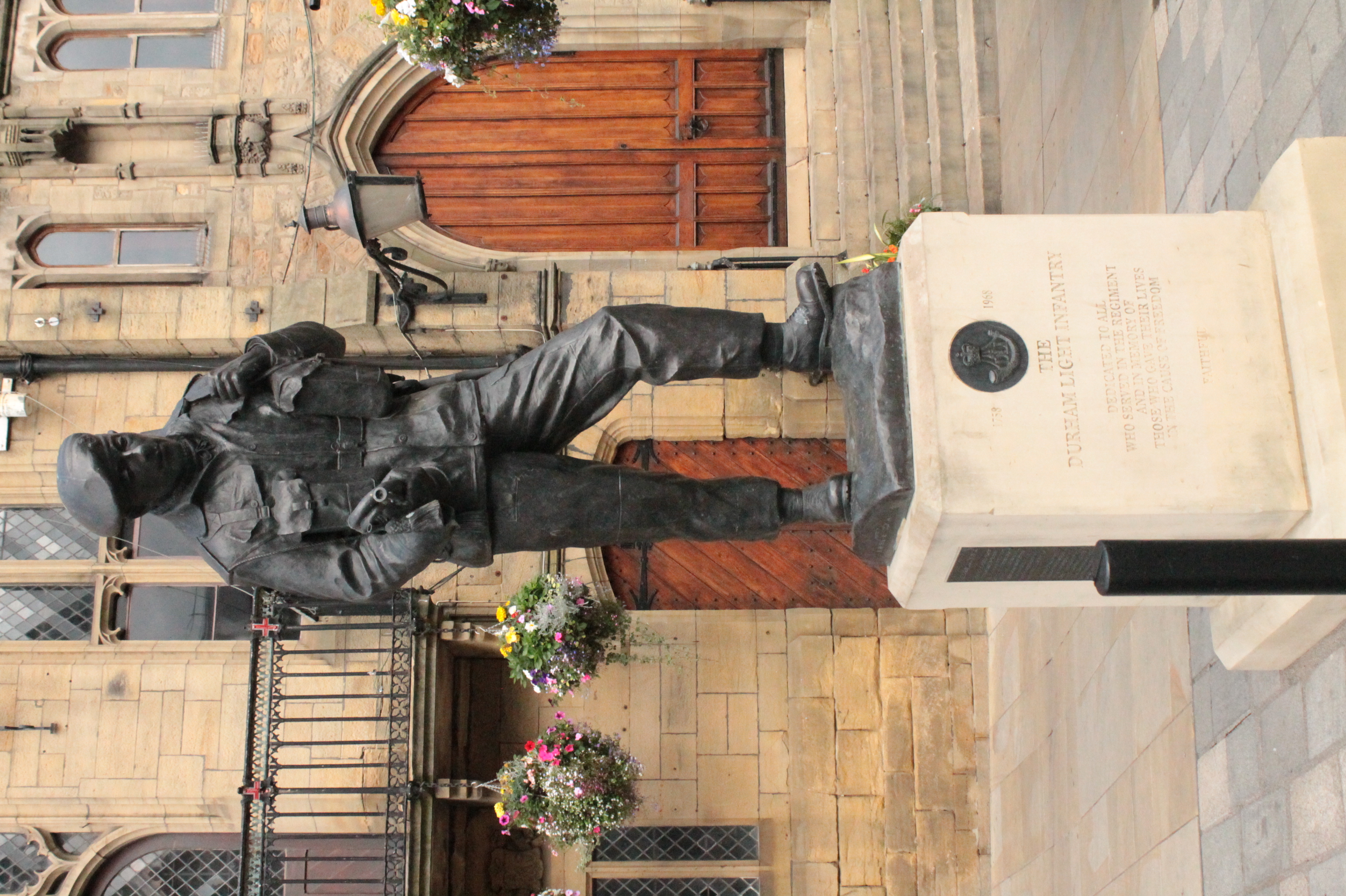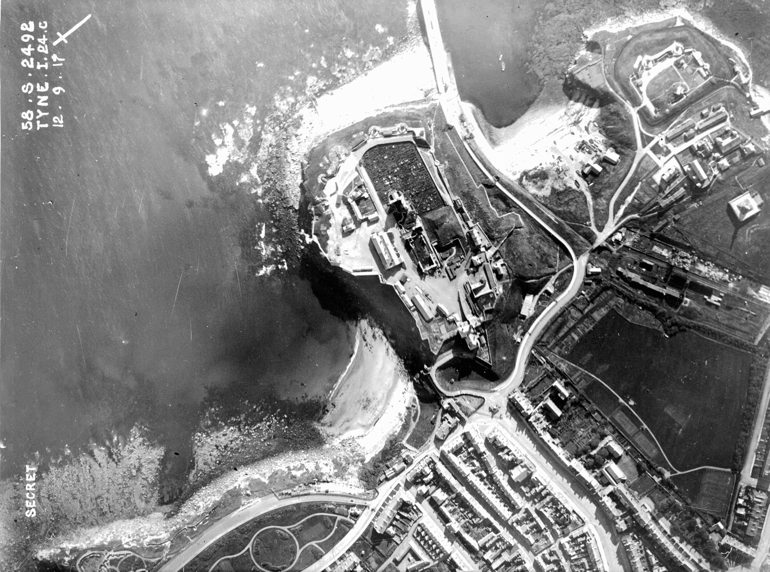|
30th (Northumbrian) Anti-Aircraft Brigade
The 30th (Northumbrian) Anti-Aircraft Brigade was an air defence formation of Britain's Territorial Army from 1936 until 1955, which defended Tyneside and Sunderland during the Second World War. Origins The formation was raised as 30th (Northumbrian) Anti-Aircraft Group on 1 November 1936 at Sunderland forming part of 2nd Anti-Aircraft Division. Its initial order of battle was as follows:Frederick, pp. 1048–50. * 62nd (North and East Riding) Anti-Aircraft Brigade, Royal Artillery (RA) – ''Heavy Anti-Aircraft (HAA) unit formed in 1936 by conversion of 73rd (Northumbrian) Field Brigade, RA'' ** HQ at Kingston upon Hull ** 172nd (1st East Riding) AA Battery ** 173rd (2nd East Riding) AA Battery ** 174th (1st North Riding) AA Battery ** 175th (2nd North Riding) AA Battery * 63rd (Northumbrian) Anti-Aircraft Brigade RA – ''HAA unit formed in 1936 by conversion of 55th (Northumbrian) Medium Brigade, RA'' ** HQ at Sunderland ** 176th (Durham) AA Battery ** 177th (Durham) AA ... [...More Info...] [...Related Items...] OR: [Wikipedia] [Google] [Baidu] |
Flag Of The British Army
A flag is a piece of fabric (most often rectangular or quadrilateral) with a distinctive design and colours. It is used as a symbol, a signalling device, or for decoration. The term ''flag'' is also used to refer to the graphic design employed, and flags have evolved into a general tool for rudimentary signalling and identification, especially in environments where communication is challenging (such as the maritime environment, where semaphore is used). Many flags fall into groups of similar designs called flag families. The study of flags is known as "vexillology" from the Latin , meaning "flag" or "banner". National flags are patriotic symbols with widely varied interpretations that often include strong military associations because of their original and ongoing use for that purpose. Flags are also used in messaging, advertising, or for decorative purposes. Some military units are called "flags" after their use of flags. A ''flag'' (Arabic: ) is equivalent to a brigade ... [...More Info...] [...Related Items...] OR: [Wikipedia] [Google] [Baidu] |
North Shields
North Shields () is a town in the Borough of North Tyneside in Tyne and Wear, England. It is north-east of Newcastle upon Tyne and borders nearby Wallsend and Tynemouth. Since 1974, it has been in the North Tyneside borough of Tyne and Wear: it's historic administration was as part of the Castle ward in county of Northumberland. It was part of the Tynemouth County Borough, when abolished in 1974 the borough became an unparished area. It is on the northern bank of the River Tyne, opposite to South Shields on the other bank. The name derives from Middle English ''schele'' meaning "temporary sheds or huts used by fishermen". History Earliest records North Shields is first recorded in 1225, when the Prior of Tynemouth, Germanus, decided to create a fishing port to provide fish for the Priory which was situated on the headland at the mouth of the River Tyne. He also supplied ships anchored near the priory. A number of rudimentary houses or 'shiels' were erected at the mo ... [...More Info...] [...Related Items...] OR: [Wikipedia] [Google] [Baidu] |
5th Battalion, Royal Northumberland Fusiliers (53rd Searchlight Regiment)
The 2nd Northumberland Rifle Volunteer Corps, also referred to as the Tynemouth Rifles, was an infantry unit of Britain's part-time force, the Territorial Army. The corps was raised during the expansion of the Volunteer movement in the 1850s and then served with the Territorial Force during the First World War. It converted to an anti-aircraft role just prior to Second World War, and continued to serve until it was amalgamated in 1950. Volunteer Force The enthusiasm for the Volunteer movement following an invasion scare in 1859 saw the creation of many Rifle Volunteer Corps (RVCs) composed of part-time soldiers eager to supplement the Regular British Army in time of need. One of these new corps was the 1st Northumberland RVC (also known as the Northumberland Rifles) formed in North Shields and Tynemouth on 16 August 1859 by coal-owner Edward Potter of Cramlington. It took some moral courage to appear in the street in Volunteer uniform: members of the 1st Northumberland RVC were ... [...More Info...] [...Related Items...] OR: [Wikipedia] [Google] [Baidu] |
Hebburn
Hebburn is a town in the metropolitan county of Tyne and Wear, England. It governed under the borough of South Tyneside; formerly governed under the county of Durham until 1974 with its own urban district from 1894 until 1974. It is on the south bank of the River Tyne between Gateshead and Jarrow and opposite Wallsend and Walker. The population of Hebburn was 18,808 in 2001, History In Saxon times Hebburn was a small fishing hamlet upon the river Tyne. It is thought that the name Hebburn may be derived from the Old English terms, ''heah'' meaning "high", and ''byrgen'' meaning a "burial mound", though it could also mean ''the high place beside the water''. The first record of Hebburn mentions a settlement of fishermen's huts in the 8th century, which were burned by the Vikings. In the 14th century the landscape was dominated by a peel tower. A wall, a portion of which still remains at St. John's Church, could also be seen. The Lordship of the Manor of Hebburn passed throug ... [...More Info...] [...Related Items...] OR: [Wikipedia] [Google] [Baidu] |
87th Heavy Anti-Aircraft Regiment, Royal Artillery
87th Heavy Anti-Aircraft Regiment, Royal Artillery, was an air defence unit of Britain's Territorial Army (TA) raised at Hebburn-on-Tyne in County Durham during the period of international tension leading up to the outbreak of World War II. It served during the Battle of Britain and Blitz and then in the North African and Italian campaigns, distinguishing itself in the landings at Salerno. It continued in the postwar TA until amalgamated in 1955. Origin The Territorial Army was rapidly expanded following the Munich Crisis, particularly the Anti-Aircraft (AA) branch of the Royal Artillery (RA). 87th Anti-Aircraft Regiment, RA was one new unit raised on 1 April 1939, with Regimental Headquarters (RHQ), 278th, 279th and 280th AA Btys at Hebburn-on-Tyne, under the command of Brevet Colonel R. Atkinson, OBE, MC, TD.Frederick, pp. 756, 777. Atkinson had been commanding officer (CO) of 74th (Northumbrian) Field Regiment and he brought with him a cadre of experienced TA gunners from h ... [...More Info...] [...Related Items...] OR: [Wikipedia] [Google] [Baidu] |
Newcastle Upon Tyne
Newcastle upon Tyne ( RP: , ), or simply Newcastle, is a city and metropolitan borough in Tyne and Wear, England. The city is located on the River Tyne's northern bank and forms the largest part of the Tyneside built-up area. Newcastle is also the most populous city of North East England. Newcastle developed around a Roman settlement called Pons Aelius and the settlement later took the name of a castle built in 1080 by William the Conqueror's eldest son, Robert Curthose. Historically, the city’s economy was dependent on its port and in particular, its status as one of the world's largest ship building and repair centres. Today, the city's economy is diverse with major economic output in science, finance, retail, education, tourism, and nightlife. Newcastle is one of the UK Core Cities, as well as part of the Eurocities network. Famous landmarks in Newcastle include the Tyne Bridge; the Swing Bridge; Newcastle Castle; St Thomas’ Church; Grainger Town including G ... [...More Info...] [...Related Items...] OR: [Wikipedia] [Google] [Baidu] |
Anti-Aircraft Command
Anti-Aircraft Command (AA Command, or "Ack-Ack Command") was a British Army command of the Second World War that controlled the Territorial Army anti-aircraft artillery and searchlight formations and units defending the United Kingdom. Origin The formation of a Command-level body of anti-aircraft defences had been announced in 1938, but Anti-Aircraft Command was not formed until 1 April 1939 under General Sir Alan Brooke, who had been commander of Anti-Aircraft Corps. He then passed control to Sir Frederick Pile, who would remain in command until the end of the war.Routledge, Chapter 26. AA Command was under the operational direction of RAF Fighter Command as part of Air Defence of Great Britain, and occupied a headquarters known as ''Glenthorn'' in the grounds of Bentley Priory, home of Fighter Command. The majority of AA Command's guns and searchlights were operated by Territorial Army units. Some Regular Army units joined after they returned from the Dunkirk evacuation. L ... [...More Info...] [...Related Items...] OR: [Wikipedia] [Google] [Baidu] |
Military Cross
The Military Cross (MC) is the third-level (second-level pre-1993) military decoration awarded to officers and (since 1993) other ranks of the British Armed Forces, and formerly awarded to officers of other Commonwealth countries. The MC is granted in recognition of "an act or acts of exemplary gallantry during active operations against the enemy on land" to all members of the British Armed Forces of any rank. In 1979, the Queen approved a proposal that a number of awards, including the Military Cross, could be recommended posthumously. History The award was created on 28 December 1914 for commissioned officers of the substantive rank of captain or below and for warrant officers. The first 98 awards were gazetted on 1 January 1915, to 71 officers, and 27 warrant officers. Although posthumous recommendations for the Military Cross were unavailable until 1979, the first awards included seven posthumous awards, with the word 'deceased' after the name of the recipient, from rec ... [...More Info...] [...Related Items...] OR: [Wikipedia] [Google] [Baidu] |
Order Of The British Empire
The Most Excellent Order of the British Empire is a British order of chivalry, rewarding contributions to the arts and sciences, work with charitable and welfare organisations, and public service outside the civil service. It was established on 4 June 1917 by King George V and comprises five classes across both civil and military divisions, the most senior two of which make the recipient either a knight if male or dame if female. There is also the related British Empire Medal, whose recipients are affiliated with, but not members of, the order. Recommendations for appointments to the Order of the British Empire were originally made on the nomination of the United Kingdom, the self-governing Dominions of the Empire (later Commonwealth) and the Viceroy of India. Nominations continue today from Commonwealth countries that participate in recommending British honours. Most Commonwealth countries ceased recommendations for appointments to the Order of the British Empire when they ... [...More Info...] [...Related Items...] OR: [Wikipedia] [Google] [Baidu] |
Durham Light Infantry
The Durham Light Infantry (DLI) was a light infantry regiment of the British Army in existence from 1881 to 1968. It was formed in 1881 under the Childers Reforms by the amalgamation of the 68th (Durham) Regiment of Foot (Light Infantry) and the 106th Regiment of Foot (Bombay Light Infantry) along with the Militia and Volunteers of County Durham. The regiment served notably in the Second Boer War, World War I and World War II, the Korean War and the Indonesia–Malaysia confrontation. During times of peace it had duty in India, China, West Germany and Cyprus. In 1968, the regiment was amalgamated with the Somerset and Cornwall Light Infantry, the King's Own Yorkshire Light Infantry and the King's Shropshire Light Infantry to form The Light Infantry, which again amalgamated in 2007 with the Devonshire and Dorset Regiment, the Royal Gloucestershire, Berkshire and Wiltshire Regiment and the Royal Green Jackets to form a new large regiment, The Rifles, which continues the lineag ... [...More Info...] [...Related Items...] OR: [Wikipedia] [Google] [Baidu] |
Sunderland Rifles
The Sunderland Rifles was a Volunteer unit of the British Army formed in 1860. It went on to become a Battalion of the Durham Light Infantry (DLI) in the Territorial Force and saw action as infantry and pioneers in some of the bloodiest actions on the Western Front during World War I. Between the wars it became an air defence unit, serving during World War II in The Blitz and the campaign in North West Europe, when it had a special role in the Rhine crossing. Postwar it continued in the Territorial Army in the air defence role until 1975, when its successor unit reverted to infantry. Origin During an invasion scare in 1859, large numbers of part-time Rifle Volunteer Corps (RVCs) were formed throughout Great Britain, eager to supplement the Regular British Army in case of need. The 3rd (The Sunderland) Durham Rifle Volunteer Corps was one such unit, with the first officers' commissions being issued on 6 March 1860. By 1862 the unit had six companies under the command of Major L ... [...More Info...] [...Related Items...] OR: [Wikipedia] [Google] [Baidu] |
Tynemouth
Tynemouth () is a coastal town in the metropolitan borough of North Tyneside, North East England. It is located on the north side of the mouth of the River Tyne, hence its name. It is 8 mi (13 km) east-northeast of Newcastle upon Tyne. It is also home to Tynemouth Priory. Historically part of Northumberland until 1974, the town was a county borough which included the nearby town of North Shields. In 2001, the population of the town was recorded at 17,056. History The headland towering over the mouth of the River Tyne has been settled since the Iron Age. The Romans may have occupied it as a signal station, though it is just north of the Hadrian's Wall frontier (the Roman fort and supply depot of Arbeia stands almost opposite it on the southern headland of the Tyne). In the 7th century a monastery was built in Tynemouth and later fortified. The headland was known as ''Pen Bal Crag''. The monastery was sacked by the Danes in 800, rebuilt, and destroyed again in ... [...More Info...] [...Related Items...] OR: [Wikipedia] [Google] [Baidu] |

.jpg)






